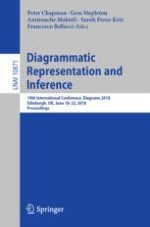2018 | OriginalPaper | Chapter
Aristotelian and Duality Relations Beyond the Square of Opposition
Authors : Lorenz Demey, Hans Smessaert
Published in: Diagrammatic Representation and Inference
Publisher: Springer International Publishing
Activate our intelligent search to find suitable subject content or patents.
Select sections of text to find matching patents with Artificial Intelligence. powered by
Select sections of text to find additional relevant content using AI-assisted search. powered by
